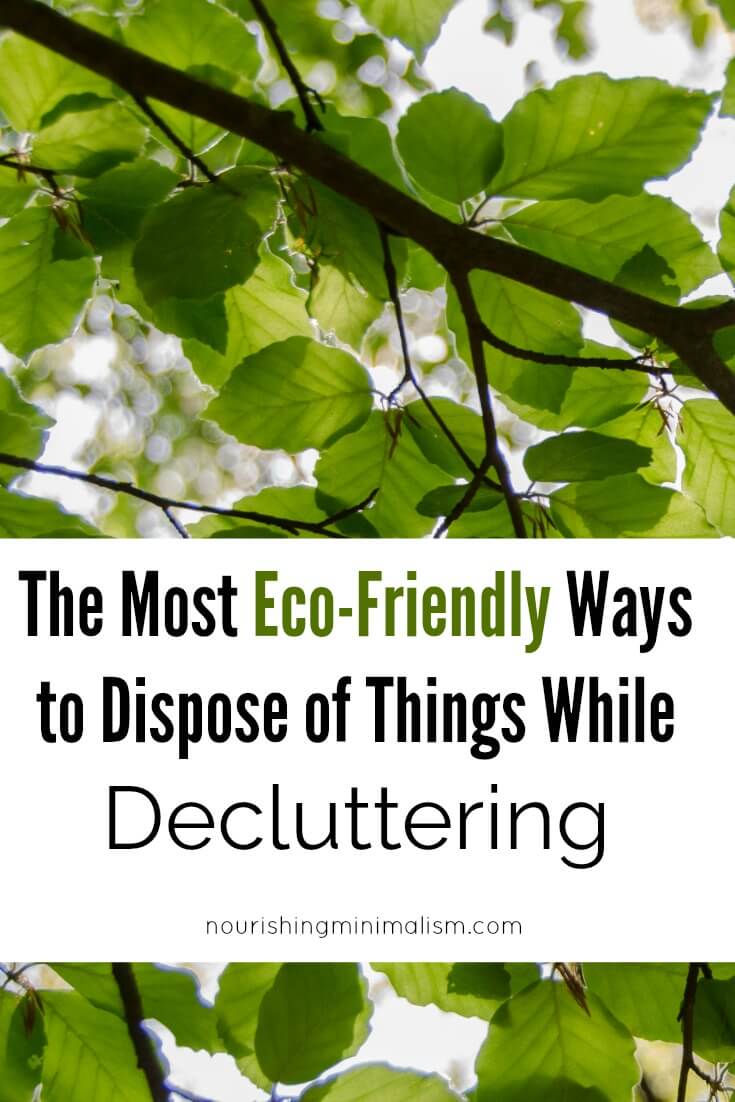The Most Eco-Friendly Ways to Dispose of Things While Decluttering

This is a guest post from Emily Folk, Emily is the editor of Conservation Folks and feels passionate about eco-friendly living and reducing her footprint.
It happens to everyone — everything seems fine until one day, we realize our living space has way too much stuff. With our landfills increasing in volume every year, decluttering can feel wrong when you start to think of all the waste it will produce. You bought all these items, so now what can you do with them? Luckily, you can take advantage of some clutter-reduction practices for your unwanted material goods that are beneficial for both your living room and the environment.
Check out four of the most important ideas we came up with to help you declutter in an eco-friendly way.
- Repurpose Items to Give Them Extended Use
While decluttering often involves removing products entirely from your home, you can sometimes recycle them within your own space and give them new purposes. An old shirt you no longer wear could become a cloth for garage projects. Baskets and bowls you don’t use anymore could transform into an organizational system to help keep track of your belongings. Repurposing items before moving onto the next decluttering step will help keep you from buying even more materials.
Another way to repurpose is to re-gift some of your belongings — on purpose. While sometimes frowned upon as bad practice, re-gifting actually gives people in your life the opportunity to find value in items completely new to them. Bonus points for your gift idea if they’re concerned about staying eco-friendly too!
- Donate the Materials You Can’t Use Yourself
If you look around your home and see a million items you think you’d like to eliminate, don’t start loading up your trash bins just yet. You might be surprised by the number of charity and donation centers that will take unwanted goods off your hands and repurpose them with a better aim. If you want to get rid of towels, sheets, and scrap fabric, for instance, animal rescue shelters will use them to keep animals dry and warm. Another option is to look into textile recycling at a Goodwill or other thrift store locations.
If you have clothing and household goods you want to get rid of, several programs could help, like foster-care clothing programs, the American Red Cross, Dress for Success and Rescue Mission Thrift Stores. These programs help children who have to move around with little to their names, victims of natural disasters and families in need of supplies.
Even miscellaneous items like arts and crafts materials, electronics and formal wear can find a better home other than a landfill. Programs like Angel Gowns and Brides for a Cause repurpose bridal clothing for the community and people in need. You never know which items might be trash to you and valuable to someone else, so take a look at local programs before tossing anything.
- Think Hard Before Your Next Purchase
Decluttering doesn’t by any means force you to stop making new purchases. Before you buy, you’ll want to think about your seller and find out their practices in regard to the environment. Many people also find that among other benefits of cleaning their home and opening up more space, they become less likely to shop as a hobby and acquire unwanted, wasteful items on impulse. For people who have lowered their consumption rates, decluttering in an environment-friendly way will be much easier in the future.
- Find Others Who Share Your Passion
For me, living in Lancaster, Pennsylvania, the Amish people are around, who do everything they can to eliminate waste in an eco-friendly way by repurposing and reusing household goods, clothing and food. They create their own household-cleaning products, use natural fertilizers, preserve the food they’ve grown themselves and repair broken items to avoid excessive waste. Many people follow Amish practices for the same goals.
Declutter Your Home Today
Don’t wait to have the living space you want with minimal clutter. It may seem daunting at first, but you’re sure to accomplish a total revamp of your living space if you take the cleaning process one small step at a time. Take advantages of our tips and the countless resources and centers available to help you remove clutter and use it for good. Chances are, the items you no longer want can still do some good out there in the world, so start your process right away!
Read more from Emily at Conservation Folks.


Thank you Rachel! I have been in a decluttering slump for quite a while now. This article, and others you have shared, has inspired me to move forward again. 💗
Any suggestions for small travel sized plastic bottles? I feel guilty just recycling them knowing how recycling is handled and contributes to plastic waste.
[…] The shelves and baskets can be made from sustainable materials. The blog Nourishing Minimalism has some great tips to follow. Additionally, get in touch with services like maid service to clean and organize […]
[…] or having a person in mind to pass things on to ensures they’re not wasted. You can click here to learn how to dispose of things the responsible […]